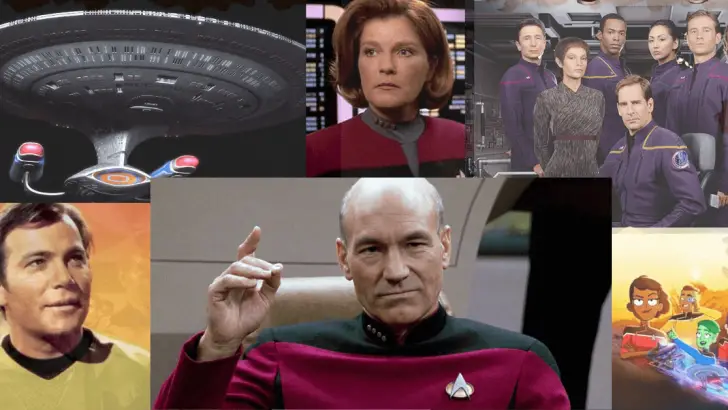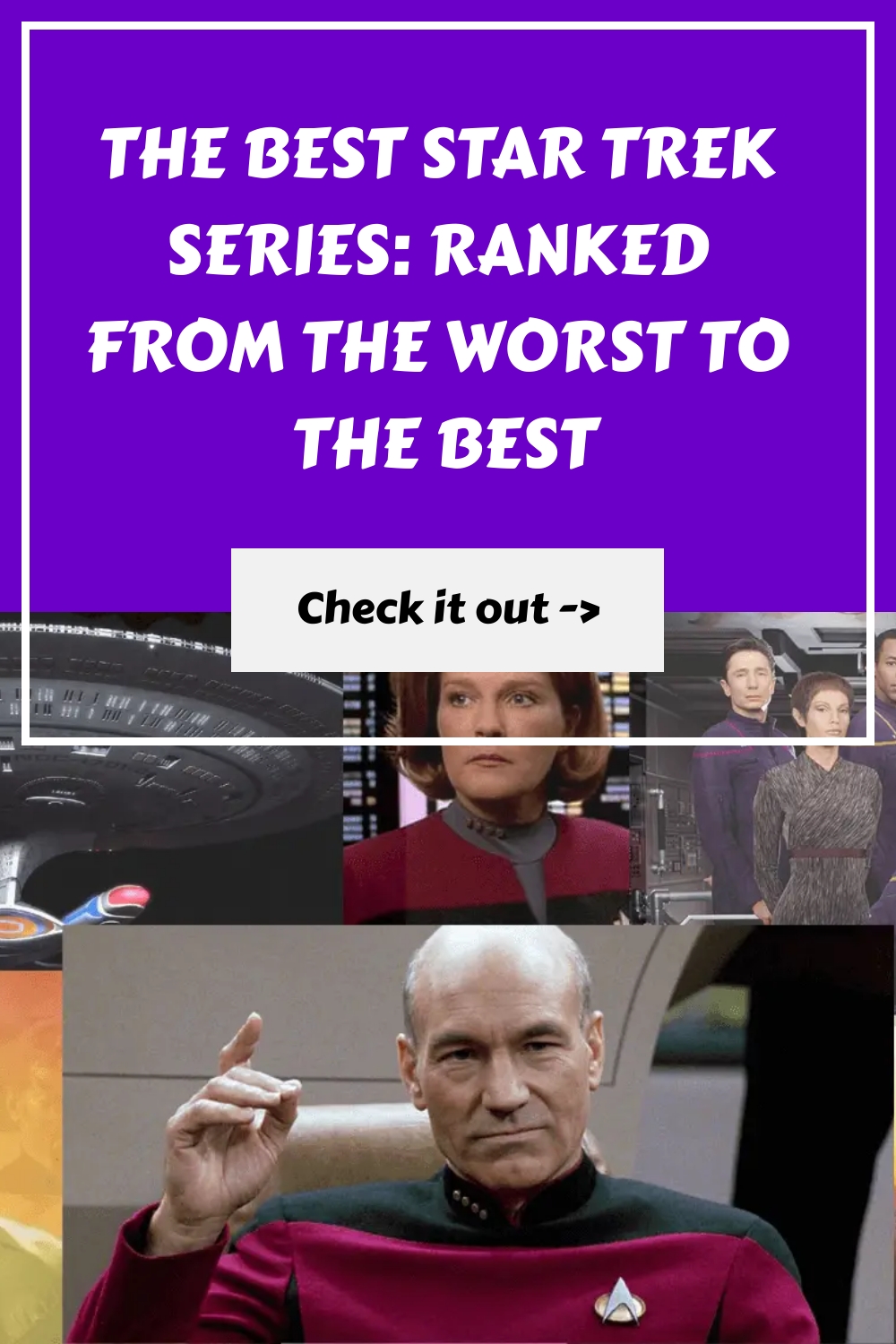We are in the 55th year since the first Star Trek series was aired, making it one of the most enduring brands in television culture. It continues to be a staple in many households, with a dedicated crowd of enthusiasts who identify as Trekkies, always eager to consume the next installment.
We are currently on the 10th series and counting. We shall intentionally exclude the Short Treks, Picard, and Lower Decks from this review as we feel it will be unjust to pit them against the other completed series. Here is why:
- Star Trek: Picard released the first episode in January 2020 and has since completed 1 season of 10 episodes. The second season is yet to air.
- Star Trek: Short Treks, an anthology that started as a spin-off of Star Trek: Discovery, was originally released in October 2018 and had two seasons with 4 and 6 episodes oscillating between live-action and animation. Each episode lasts between 10 to 20 minutes, and we see it as more of a teaser or compliment for the other ongoing series.
- Star Trek: Lower Decks is an adult animated series that only premiered on August 6th, 2020, in the wake of the COVID-19 pandemic, and has only one season of 10 episodes to work with.
- Strange New Worlds – Haven’t had a change to watch it yet!
The Star Trek franchise peaked in the 1990s when we had three series airing almost concurrently: The Next Generation, Deep State Nine, and The Voyager. It reached its peak in the 1990s when there were three of the Star Trek series in the broadcast.
Four supporting films were also released at around this time; Star Trek VI: The Undiscovered Country, Star Trek Generations, Star Trek: First Contact, and Star Trek: Insurrection. This summed up to hours and hours of Star Trek television.
We may be staring at the next peak for the franchise as the Picard, Short Treks, and Lower Decks are currently ongoing at the same time. They are already receiving accolades. The Picard won a Primetime Emmy Award in 2020 for Outstanding Prosthetic Makeup in Absolute Candor. The Short Treks won a Golden Reel Award in 2019 for best live-action under 35m for The Brightest Star, and Lower Decks got a nomination in the 2021 Critics’ Choice Super Awards. Other animations and live-action series are also currently in development.
There have been numerous prequels, sequels, and spin-offs that have treated fans to different versions of the future, a combination of time travel, space adventure, romance, and political drama.
The series appeal to different fans in their individual unique ways, and each has their favorite. Therefore, we shall not pretend to have the capacity to determine which is the best series for everyone, but we will rank them anyway, based on our team’s consensus.
Here is our ranking of the 7 completed Star Trek series from the worst to the best.
7. Star Trek: The Animated Series (TAS)

We rank it last because it has the least views from fans across the world. The first episode, Beyond the Furthest Star, aired in September 1973, and it would run for two seasons with 16
and six episodes up to October 1974 when they aired the last episode of the second season, The counter Clock Incident.
It followed the USS Enterprise’s voyages and maintained most of the characters from The Original Series (TOS). Notably absent was Pavel Andreievich Chekov, the brilliant ensign who was also the Enterprise’s navigator. (The character was omitted in a cost-cutting measure to avoid paying many voice actors).
He would later be replaced by Lieutenants M’Ress (Engineering/ communication) and Ares (navigation). Several stories are sequels to what had transpired on TOS and were intentionally scripted to provide some sort of continuity.
The series was a reaction to passionate fan mail the NBC kept receiving following the cancellation of TOS. A quick demographic survey revealed that Star Trek viewership was high in the categories of viewers advertisers needed to reach. Since the original set and props had already been disbanded at the time of this realization, an animated series became the only viable commission given the existing resources.
The episodes were shorter than your average series, each taking approximately 24 minutes. This allowed viewers to enjoy all the storytelling, effects, and dialogue in almost half the time it took on TOS. They also introduced new technology in this series like the holographic rec room and exotic alien species like M’Ress, the Caitian engineering officer.
The animated series played an important role in keeping the franchise going during the lapse between TOS and the rest of it. It could also be argued that trying to fit in those shoes is why it could not make as big an impact as the other series. It remained the sole animation in this series until The Star Trek: Lower Decks in 2020.
6. Star Trek: Enterprise
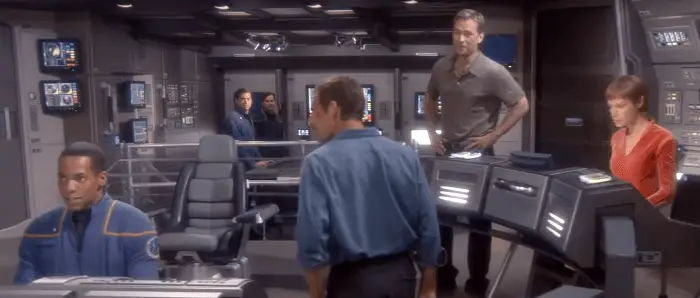
This installment aired from September 2001 to May 2005, giving us a total of 98 episodes spread over four seasons. There was so much anticipation for this series coming off the Voyager’s success that ended in the same year. Broken Bow, its pilot episode, got 12.5 million views when it was first broadcast on UPN.
The series revolves around the first Starship voyages with a Warp-5 engine, the Enterprise designation NX-01, its crew, and their encounters as they explore the deep space. It is our first interaction with Captain Jonathan Beckett Archer, the main character and commander of the Enterprise NX-01 from 2151 to 2161.
These are the early years of the Starfleet, before the Earth- Romulan war and the federation formation. The crew feels they are ready with a ship that is faster than light, having benefited from Vulcan technology.
Ironically their first mission, which is to return an injured Klingon (Klaang) home to his people, goes against Vulcan ambassador Soval’s advice.
During “The Temporal Cold War“, they launch where different time-traveling factions from different points in time are competing to manipulate history for their own benefit to attain dominance over other factions. This plot is not fully exhausted in the series, but since it is Star Trek, we are positive we shall get closure in one of their spin-offs.
Among their notable quests is a mission to find the Xindi in previously unchartered regions of space to prevent an impending attack on the Earth. The Xindi were on a mission to destroy humans and had already unleashed a space probe that killed 7 million people.
It winds up with the Enterprise NX-01 being decommissioned and signing of the United Federation of Planets Charter, which promises peace at least for a short period.
Despite the brilliant moments, the ratings of the series were not as impressive as expected, which led to its cancellation after the fourth season. Some episodes felt like remakes of the previous series and some of the characters seems flat.
5. Star Trek Voyager
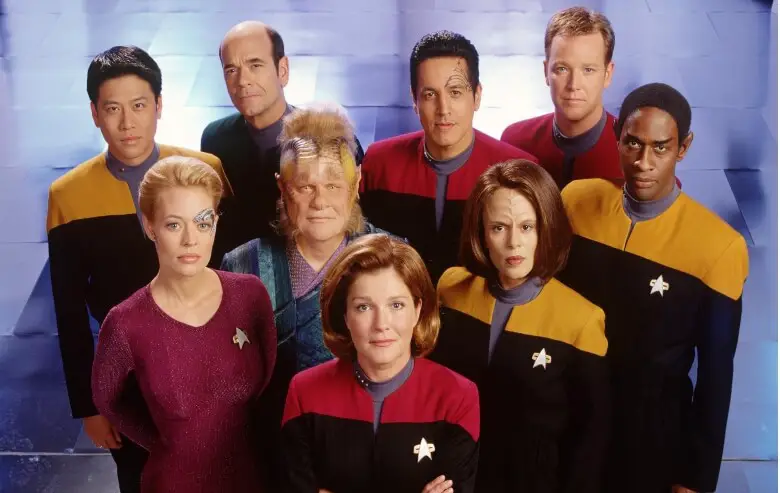
Voyager aired from January 1995 to May 2001 and gave us 172 episodes spread over seven seasons on the then UPN Network. It follows the adventures of the 24th Century Starfleet vessel, the USS Voyager. We follow them to the universe ‘badlands’ known as the Delta Quadrant, 70,000 light-years away from the Earth.
They find themselves stranded in the badlands while searching for a missing rebel ship in which one of their officers has been planted as a spy. They are pulled by a powerful energy, suffering casualties and ship damage, and find themselves stranded in a strange part of the universe. They are reunited with their officer and are forced to join forces with the surviving rebels when they discover their ship had suffered the same fate.
The series focuses on their challenges and growth as they try to make their way back to Earth. They catch a few breaks, which ultimately reduces their journey back.
The Voyager was interesting as it pioneered several changes in the Star Trek franchise. It had the first-ever female captain to feature in a Star Trek series who was also the lead character, Captain Kathryn Janeway, Commander of the USS Voyager.
They also featured CGI technology for the first time on Star Trek, which enabled some very convincing space shots.
Being that far away also gave leeway to break protocol to survive, and the captain often did, adding excitement to the plot.
4. Star Trek: Discovery
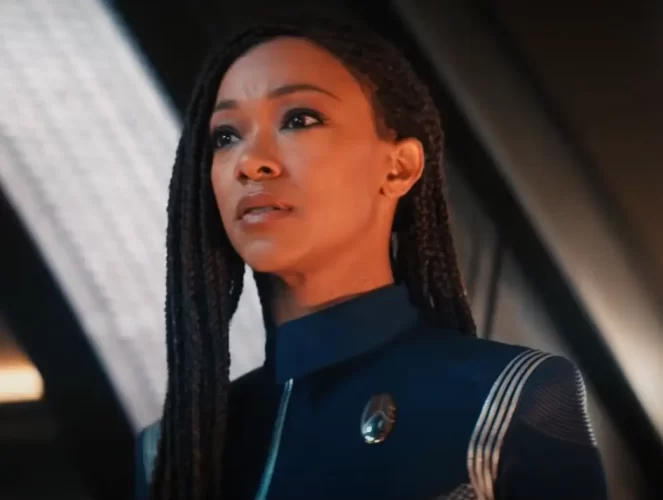
It is chronologically set to follow the Star Trek: Enterprise, whose last scenes are in 2161 during the United Federation of Planets Charter signing. It is set in the 23rd century from 2256 and revolves around the USS Discovery NCC-1031. It stirred a bit of controversy being set a decade before Captain Kirk started his voyages aboard the USS Enterprise.
The series has 42 episodes spread over three seasons so far. It was released in 2017, coming a whole 12 years after the release of the last episode of Star Trek: Enterprise, meaning a lot was riding on its success.
Ideally, it is a prequel to The Original Series making the USS Discovery is older than the USS Enterprise. Their motto is “all things can be understood once they are discovered.” It is a Crossfield-class starship that should be dedicated to science and research, though still capable of defending itself.
They rescue a prison shuttle transporting first officer Michael Burnham who was serving time for a mutiny. She is the first African American lead character in a Star Trek Series.
The Discovery is rarely dull; there is constant action from the Klingon-Human war, mysterious creatures with extraordinary powers like the Tardigrade, and an unprecedented interaction of ships and crew.
3. Star Trek: The Original Series
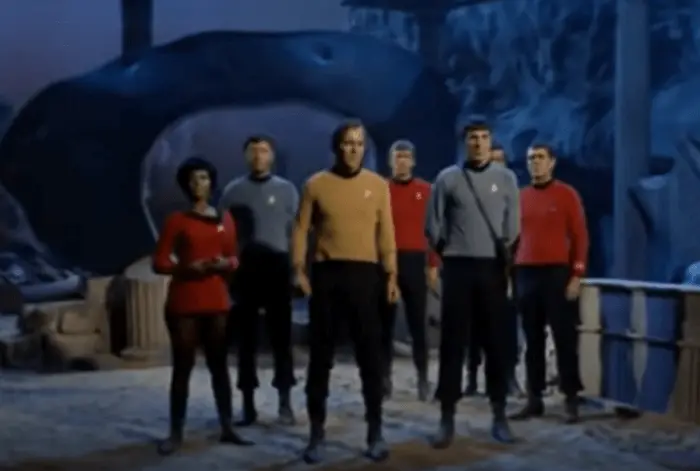
This is the first installment of the Star Trek franchise, which opened the way for everything that followed. It premiered on NBC in September 1966 and followed Captain James Tiberius Kirk and his crew on the USS Enterprise as they transverse the galaxy on various missions, for exploration, to seek out new life and in defense of the United Federation of Planets
The plot’s uniqueness served to keep the audience interested for most of the first season, although ratings started to drop towards the end. The second and third seasons got lower ratings, leading to a budget cut in the third. This led to some very low budget, poor quality episodes, further plummeting the ratings.
It still produced some of the best episodes in the entire franchise, like The City on the Edge of Forever, where the Chief Medical Officer, Leonard McCoy, accidentally overdoses on a drug and, in the ensuing paranoia, inadvertently travels back in time and alters history. In the quest to rectify this, there is an adventure, romance, and sacrifice in one episode.
It is a very critical series as it laid the foundation of the entire franchise.
2. Star Trek: Deep Space Nine (DS9)
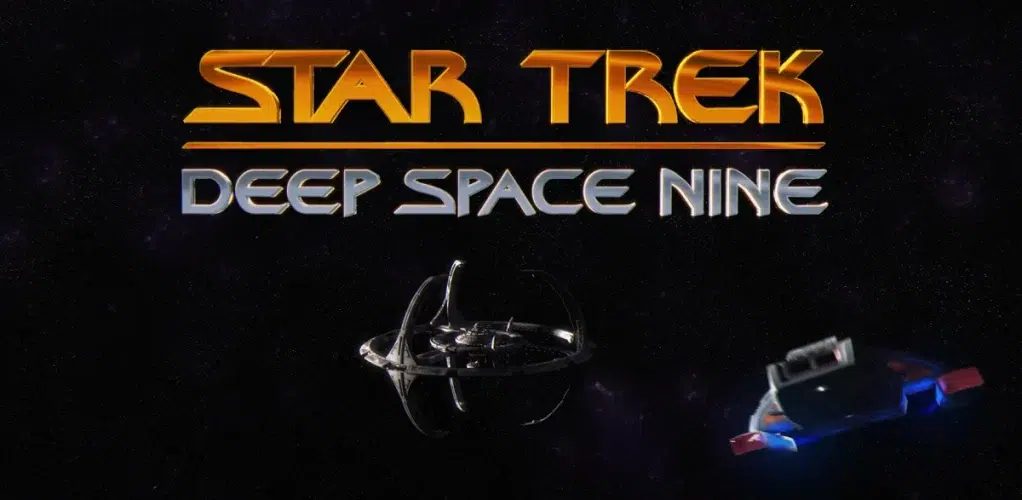
This series was originally aired from January 1993 to June 1999, during which period they gave us 176 episodes spread over seven seasons. Unlike its predecessors, it was not set on a starship but rather a space station in the Bajoran sector, after which it was named the “Deep Space Nine“.
The station is led by Commander Officer Benjamin Lafayette Sisko, who reluctantly takes the assignment because he has a son (Jake). The DS9 is not ideal for raising a child, and he just lost his wife in battle. His mission is to aid the Bajors’ transition from the Cardassian occupation they have just liberated themselves from. Ironically, it is the Cardassians who built DS9 during their occupation.
The end goal is to convince them to join the United Federation of Planets (UFP). Avery Brooks plays Sisko, the first Black American to get the lead role in any Star Trek series.
One of the highlights of the series is the eclectic crew that Sisko works with on the station. It is a joint effort as it is the Bajorans who have invited the UFP to be joint administrators of the station. Constable Odo, the chief of security, is a Changeling capable of assuming any shape he wants to.
There is Quark, a Ferengi who is naturally capitalistic and profit-oriented. He owns a bar on the DS9 and is constantly scheming up ways to cut corners and make more, resulting in constant conflicts with Odo, which is comic relief throughout the series.
Jadzia Dax, the station’s chief science officer, is a member of the Trill species who is symbiotic and can move from one host to another, accumulating memories, experience, and skills.
1. Star Trek: The Next Generation (TNG) (Editor’s Top Pick)
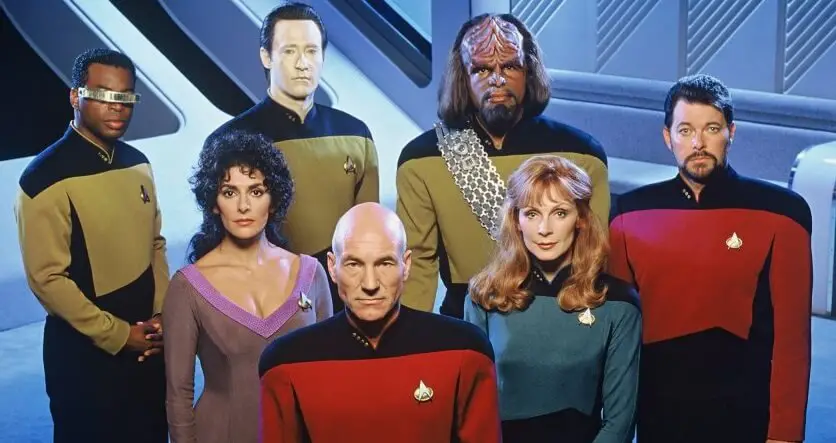
The Next Generation is set in the Starship USS Enterprise (NCC-1701-D), more easily referred to as the Enterprise-D. Under the leadership of Commanding Officer Jean-Luc Picard. The vessel was in service between 2363 and 2371. The series had 178 episodes in 7 seasons which actually matches the number of years Picard’s mission lasted.
We are going to justify why we classify it as the best. It had the highest ratings and viewership for all the Star Trek series in the franchise. Patrick Steward delivered an outstanding performance as Jean-Luc Picard and, up to date, is considered the face of Picard. He is currently working on a show specifically about his character.
The Starship has enhanced capabilities to move faster and protect itself. The new technology transcends to communication as the crew has a combadge in place of the traditional insignia they usually wore on their left breasts.
It had some of the most memorable episodes in the franchise. The last episode, All Good Things, particularly stood out and had to be split over two episodes. It involved captain Picard jumping through time in a leap of faith to fix an anomaly that might destroy humanity. This episode got 30 million views when it was first aired.

